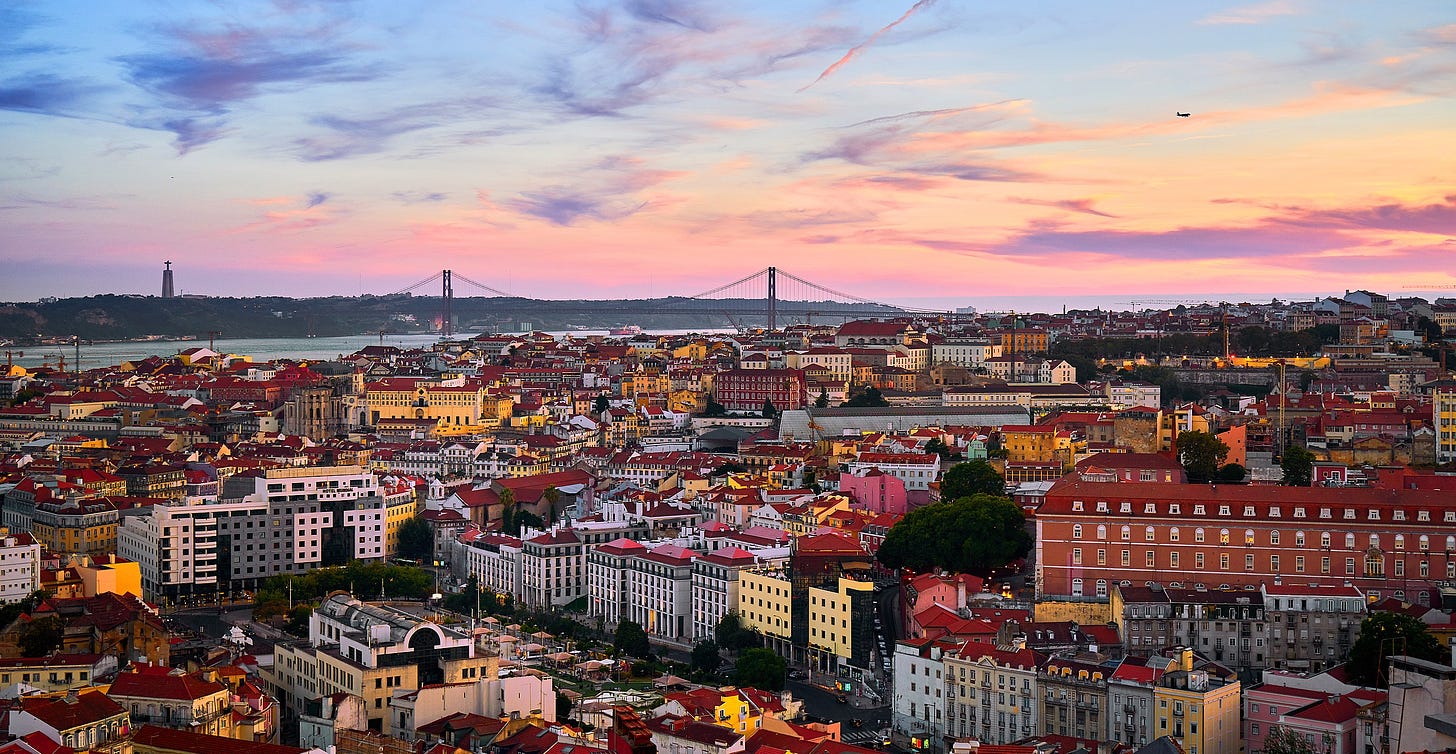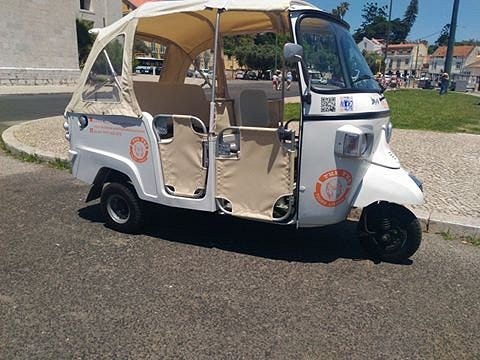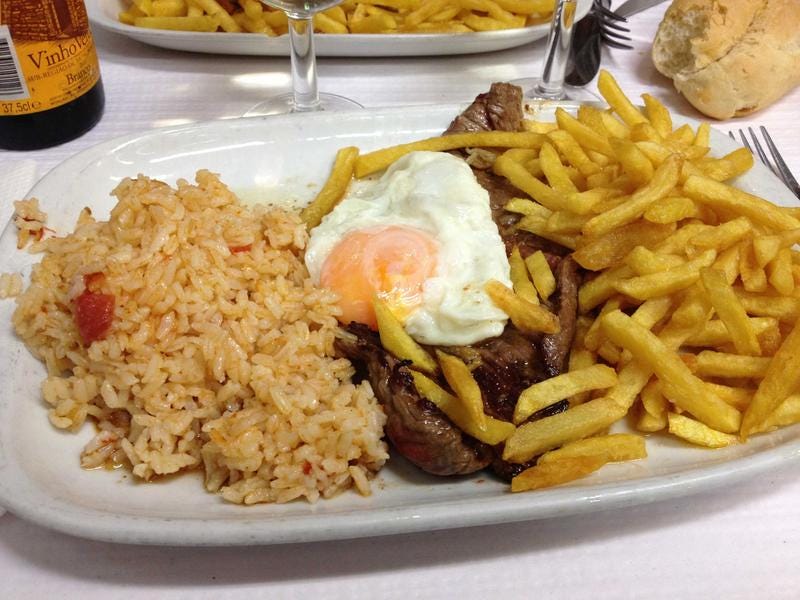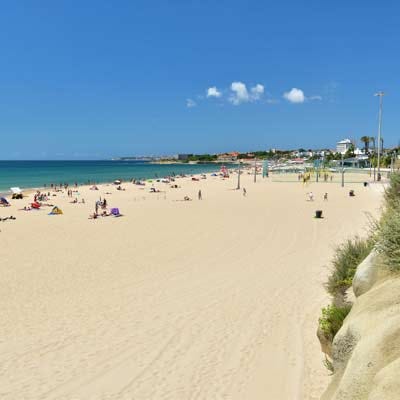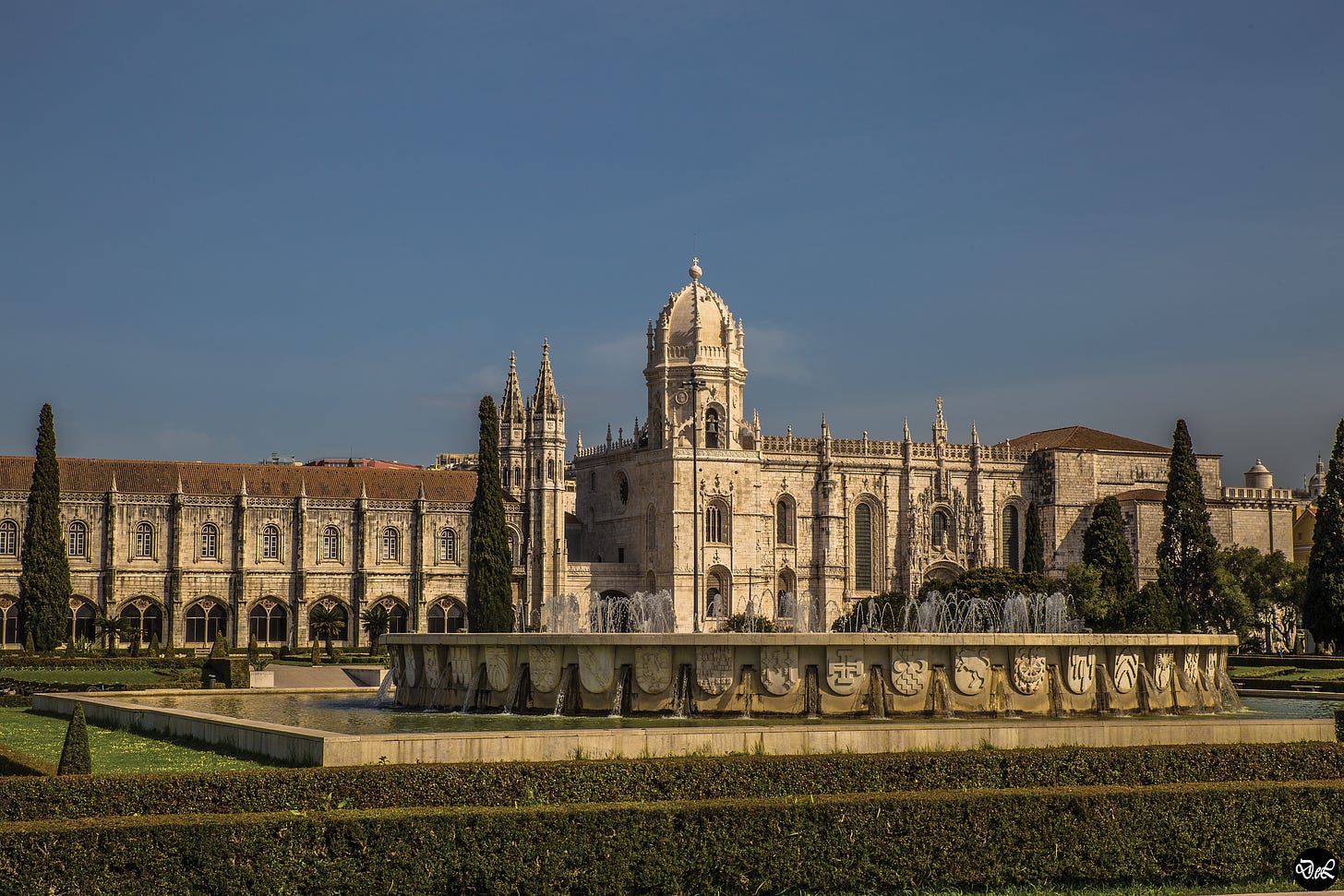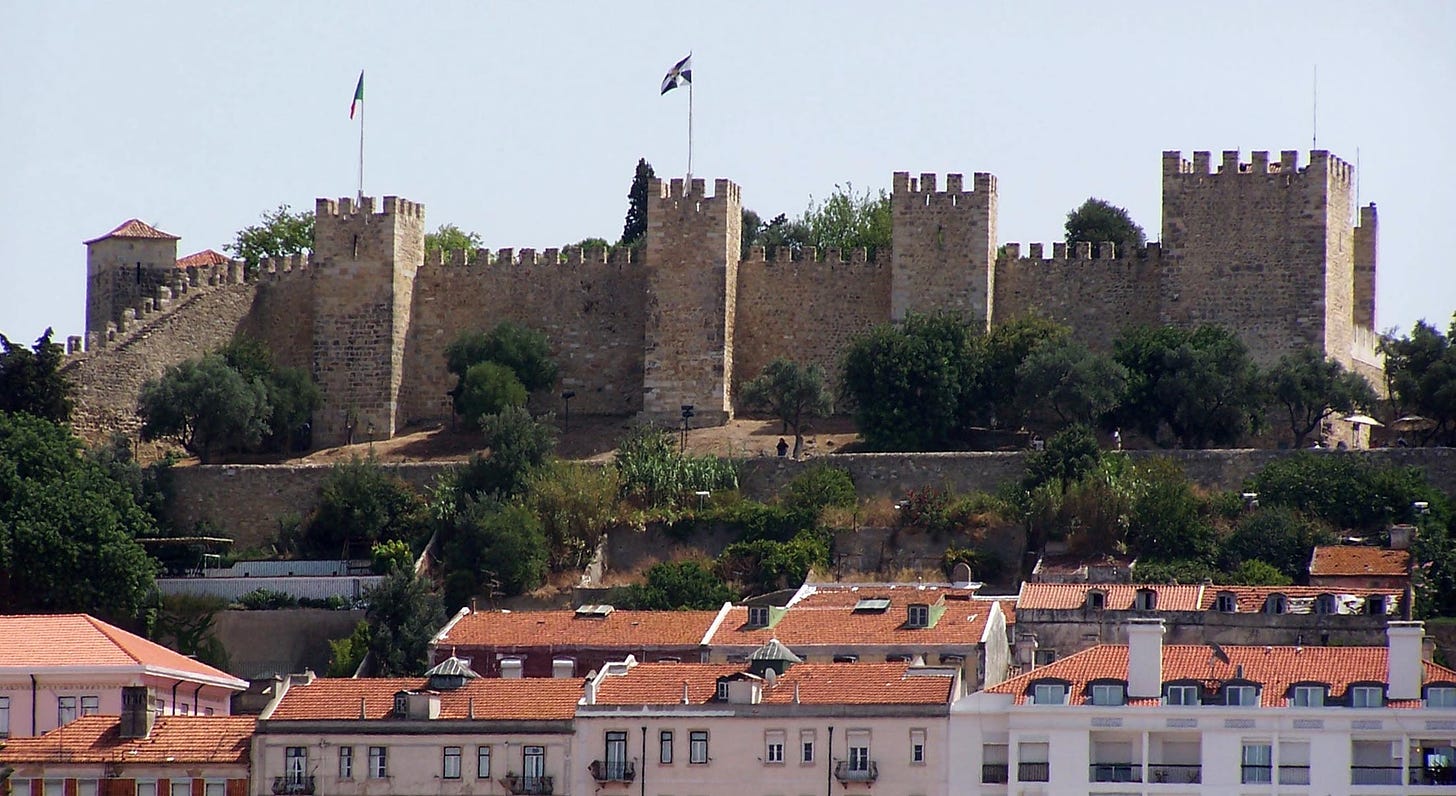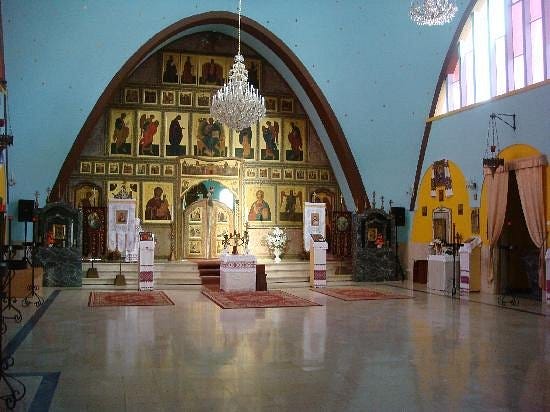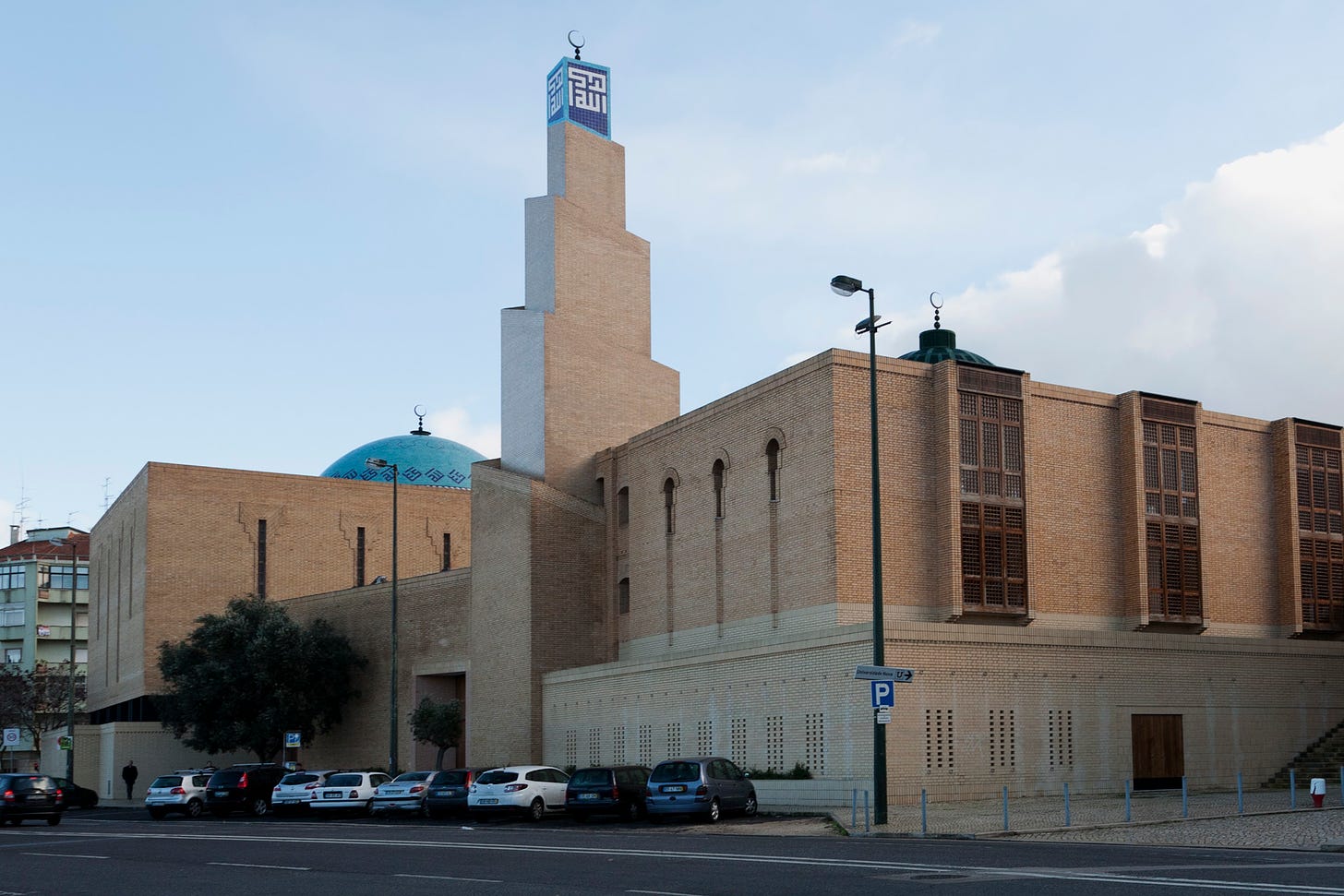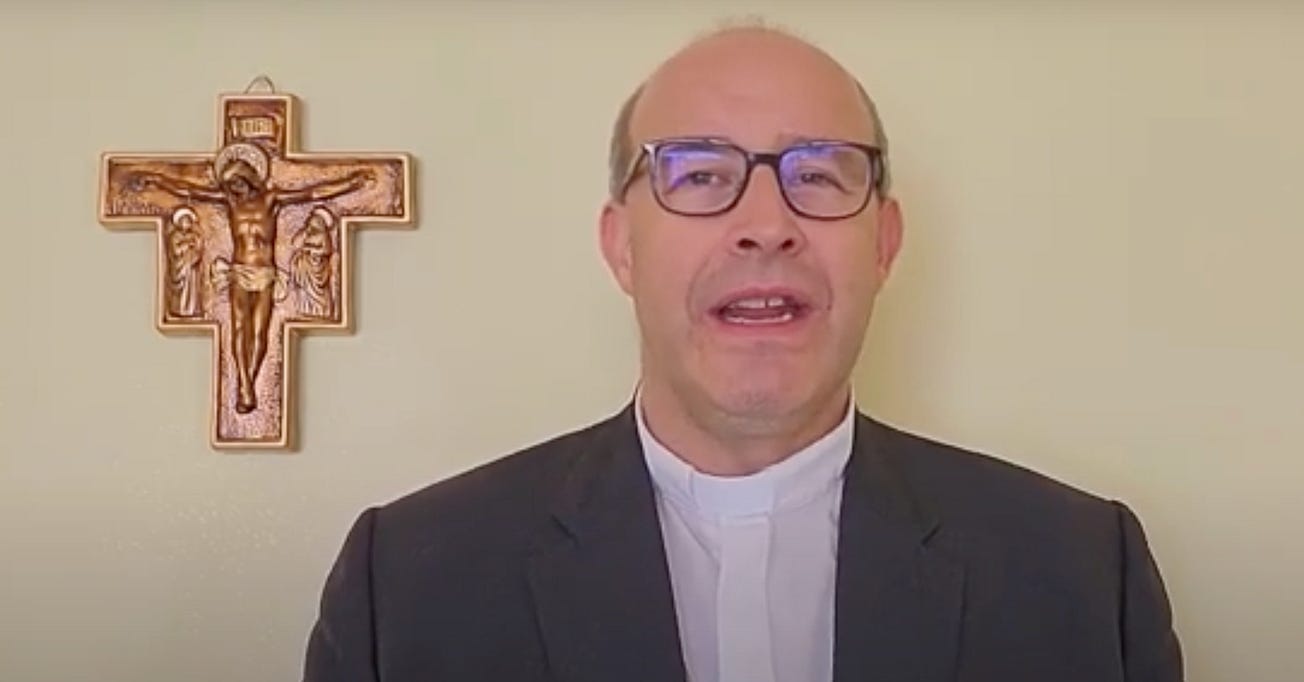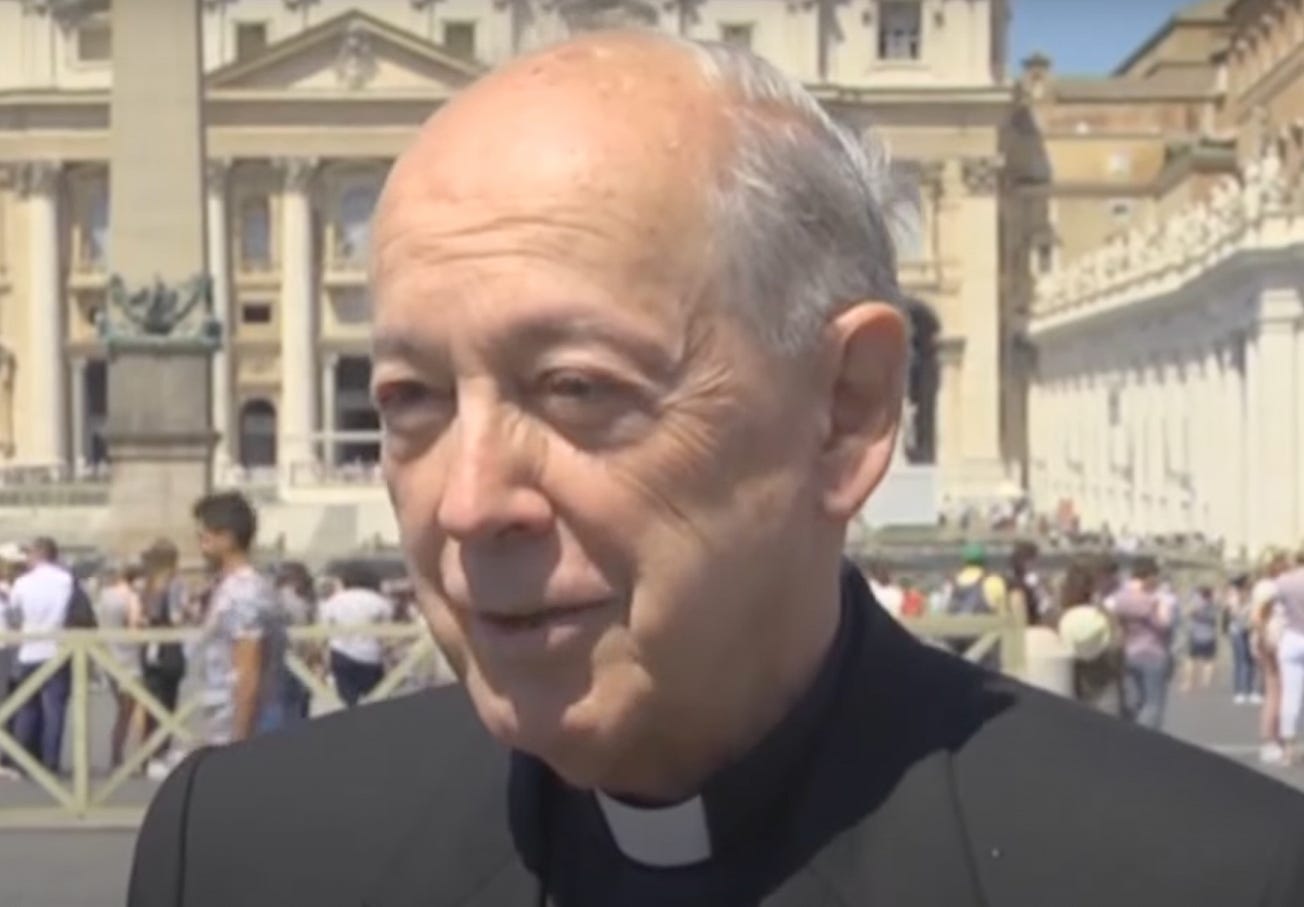With thousands of pilgrims heading to Lisbon for World Youth Day, The Pillar asked our resident Portuguese correspondent, Filipe d’Avillez for his top ten travel tips when heading to his hometown.
From where to swim, to what not to miss in the city, how to get around, and when to go to Mass, here’s the locals’ guide to getting the most from your WYD trip!
Welcome to Portugal! For many English-speaking pilgrims from North America, Portugal can seem a long way away, and flights probably weren’t cheap, but we’re glad you’re coming, and hope you have a great time.
Many, though not all, North American pilgrims heading to Lisbon will be staying in Loures and Odivelas. These are dormitory towns, with not much to see, but it is easy to get into Lisbon proper by public transport and, crucially, quite close to the venue for the final vigil and Mass.
For all those who are coming to WYD, here are ten tips that might come in handy.
Portugal is not Spain
This should probably go without saying, but Portugal is not Spain, and the Portuguese don’t appreciate it too much when people get that wrong. With the exception of a 60-year gap between 1580 and 1640, Portugal has been fully independent for almost 900 years and has some of the oldest recognised borders in the world.
In the same vein, people in Portugal speak Portuguese, not Spanish. The languages are similar, and a Portuguese person will be able to understand most Spanish speakers (the opposite is generally not the case), but don’t just try to speak Spanish as if the two were the same, because that might not go down well.
Most Portuguese, especially the younger generations, speak good English and, more important, people will generally make an effort to understand you.
Basic information
Portugal is part of the European Union, and the currency is the Euro. This means that if you are traveling around Europe before or after visiting the country, you won’t need to be exchanging money in most places.
As with much of Europe, electrical sockets are 230 volts. Don’t expect your host family, or the place you are staying, to be equipped with an adapter — bring one with you.
Portugal has a very extensive network of ATM machines, and most locations will accept modern payment methods, including digital means. It is a good idea to have a little cash, but for practical reasons, and for basic safety, don’t carry too much on you. You’ll want to check with your bank what commissions apply to withdrawals or overseas payments.
Most restaurants and other establishments will have WiFi, but remember that, especially at large events, it is likely that cell service in general will be overloaded and therefore slow, or non-existent. Check with your service provider for applicable roaming charges.
The emergency number in Portugal is 112. You can dial it to reach police or medical services and you should be able to speak English.
You can purchase and consume alcohol from the age of 18. Enforcement, especially at night, is generally lax, but with the influx of young people expected in Lisbon authorities will probably be keeping a more watchful eye on instances of underage drinking.
The local population does not have much tolerance, or sympathy, for tourists who drink too much and start acting out, so if you do want to drink, do so with moderation.
Always wear sunscreen
It’s going to be hot. If you’re wondering how hot, bear in mind that Lisbon is closer to Africa than it is to any other European country except neighboring Spain.
Temperatures in Lisbon in August can easily go over 40ºC (104ºF) and with all the crowds you can expect to be spending quite a bit of time out in the open, and out of the shade. So, wear sunscreen, bring a hat, and make sure you are hydrated.
Tap water is safe to drink in Lisbon and surroundings, but if you leave home unprepared you can always buy water or other refreshments in town.
Transport
Lisbon is quite well served by public transport. There is a decent underground/subway network which mostly covers central Lisbon, and some of the outskirts are connected by train. Within the city there is a good bus network, and tickets are quite cheap, though officially registered pilgrims will be given travel cards. There are also plenty of taxis and similar services, such as Bolt and Uber.
And then there are the traditional trams, which are lovely to look at, and have become a symbol of the city. Most guidebooks will suggest you try riding the 28, but it is generally crowded with dozens of tourists who woke up earlier than you did, or didn’t mind waiting in line for ages.
Remember that the city is expecting to double its usual population for WYD, so expect delays and crowds.
As with other big cities, Lisbon has fallen prey to the electric scooter plague, so if that’s the sort of thing you enjoy, then there are plenty available, as well as a good range of electric bicycles to rent. Bear in mind that helmets are not provided and that scooters and bicycles are not allowed in certain areas where more crowds are expected during WYD events.
Finally, for some bizarre and unknown reason, Lisbon has for around a decade now been overrun by tuk-tuks.
Yes, you read that right. Apparently, somebody thought it would be fun to bring a couple of these traditional Asian modes of transport to the city, to offer tours to tourists, and the idea was so successful that now they are everywhere.
Once in the city itself, the best is to walk as much as possible. Like Rome, Lisbon is built on seven hills, so there will be a lot of ups and downs, and you can expect it to be hot. But on the other hand, the city isn’t that big compared to other capitals, and many things are within walking distance.
Whatever you do, don’t try to drive yourself into the centre of the city. It is bad enough generally, but during WYD many central roads will be closed to non-residents, and the roads that are open will be full of traffic.
Keep your valuables safe
Lisbon has always been a touristy city, but since the Arab Spring made countries like Tunisia and Egypt less appetizing, tourism absolutely exploded in the Portuguese capital. With tourism, as one knows, come pickpockets.
Just be careful. As mentioned above, don’t carry too much cash on you and keep your wallet, cell-phone and other expensive items out of reach. Avoid carrying your passport around with you, for example, provided there is somewhere safe you can leave it during the day.
Public transport is always a risk, but the traditional old trams, which tend to be more crowded with distracted tourists, are particularly prone to pickpockets.
Snails, gizzards and cod
Registered pilgrims will be supplied with meals. This year, pilgrims will be able to pick what they take with them at the beginning of the day, leaving behind things they don’t like, or that they think they might not need, to avoid food waste.
However, it is likely that you will want, or need, to go out for a meal at some point.
Portugal is a seaside country, and though not actually touching the Mediterranean, it is generally ranked among Mediterranean countries in terms of diet.
If you’re feeling adventurous, remember this is snail season!
Other tasty local delicacies include “moelas” – stewed chicken gizzards; “cabidela” – rice with chicken cooked in its own blood, and “choco frito” – deep-fried cuttlefish, a relative of the squid.
Don’t think twice if you see “cozido à portuguesa” or “feijoada” on the menu. These are traditional Portuguese stews, full of meat, cabbages, vegetables, beans and traditional tasty sausages.
Portugal’s national dish is codfish, known in Portugal as “bacalhau.”
This is ironic, since cod isn’t found in Portuguese waters, but the Portuguese love it so much that fishermen would venture as far as Newfoundland to catch it, then salt it and bring it back home. There are supposed to be 1001 ways to cook cod in Portugal, though that’s probably a conservative estimate.
If you’re in a hurry though, and looking for a cheap bite to eat, then ask for a “bitoque”, which is basically a pork or beef steak with a fried egg on top, accompanied with French fries, rice and salad, or a “bifana”, a marinaded pork steak sandwich which the late Anthony Bourdain famously called “that magical dish” and “a much-loved cure all in the form of a sandwich.”
Fish is generally excellent, and fresh, though it can be expensive.
There is not much point listing restaurants, since your phone can just as easily tell you where is good near you, but do be careful to avoid tourist traps, easily recognizable by the fact that somebody will be standing in the street trying to usher you inside. If you see a greasy-looking place with the menu written on a paper tablecloth and taped to the window, then that’s most likely a safer bet, though such establishments are slowly being squeezed out of central Lisbon by rising costs.
Remember that traditional Portuguese food can be quite heavy and you can expect portions to be quite generous, especially in more rural areas, outside of Lisbon.
Then, of course, you also have your usual offer of fast-food restaurants which are increasingly present in Lisbon.
Have a swim, please try not to drown
As mentioned above, it’s going to be hot. Luckily, when you’re in Lisbon you’re never far from the water, so come prepared to go for a swim.
Lisbon is near the Atlantic coast, but the closest large body of water is the Tagus River, or Tejo, in Portuguese. There are a couple of river beaches, but they’re small and not that pleasant. As a rule, avoid jumping into the river, no matter how much you might feel like doing so. The water is cleaner nowadays than it used to be, but the river is extremely wide as it flows through Lisbon, and currents can be treacherous.
There is no shortage of beaches near Lisbon. Proper ocean beaches that is. The closest, and easiest to get to from central Lisbon are the ones along the coastline that runs to Cascais, and which are served by a train line. In the summer these beaches are generally very crowded, but relatively safe, as the direction of the swell means that the water is pretty much flat. The largest and nicest is Carcavelos Beach, a 10-minute walk from Carcavelos train station.
As you reach Cascais, though, the coastline bends and the beaches become increasingly beautiful — and dangerous.
Beaches like Guincho, in Cascais, and Praia Grande, in Sintra, are gorgeous, but the waves can get big and the currents are deadly. There are also beautiful and long stretches of beach across the river, the closest to Lisbon being Costa da Caparica.
As the saying goes, “if in doubt, don’t go out”. Never swim alone. Avoid swimming at sunset: the ocean is beautiful, but you’ll be backlit, making it more difficult to spot from the beach. On the bright side, the water is cold enough that you generally don’t need to worry about anything trying to take a bite out of you.
Portugal is also a surfing haven, and if you want to try your hand at surfing or bodyboarding, many beaches will have gear for rent. If you are not an experienced surfer, pay for lessons if you like, but don’t just rent a board and venture out, it’s not worth the risk.
Beaches have lifeguards on duty from early morning until 7pm. Red flag means don’t go in the water, yellow means caution and green means it's safe.
Sightseeing tips
Lisbon and its surrounding areas have a lot to see, and you should make sure you take some time to enjoy what’s on offer.
One of Lisbon’s most magnificent landmarks is the Jerónimos Monastery, in Belém, near the river. The monastery is walking distance from the Belém Tower, the Monument to the Discoveries and the Presidential Palace. Fortunately, this is also where many of the WYD activities are going to take place.
The large garden near the monastery will be home to conferences in the “Vocations Fair” and to the “Forgiveness Park”, where dozens of priests will be on-hand to administer the sacrament of confession.
There is generally a long line to get into the monastery itself, but “tourists” are barred from entering during Mass, so the best idea would be to aim to go to Mass there and enjoy the church in all its splendor during the celebration. Mass is usually at 10 in the morning and 7pm, but schedules are likely to change during WYD.
There is a lot to see, but make sure to check out the tomb on the right-hand side of the church as you face the altar. Mounted on marble elephants, this is the tomb that supposedly held the remains of King Sebastian, who disappeared during a battle in Morocco in 1578. His death led to Portugal’s loss of independence to Spain two years later, but since his body never appeared, the belief arose that he would one day return to save the country.
The Spanish only made things worse by staging the recovery of his body and holding a funeral, but during the procession the coffin tipped over and bricks fell out. Sebastianism, as it is known, became a core-part of Portuguese identity, and persists to this day, either overtly, or in the conviction that when things go wrong, salvation will miraculously present itself.
St. George’s Castle overlooks Lisbon. It is a steep walk to get there, but worth it, as it takes you through some of the city’s most traditional neighborhoods. St. George is actually one of the Patron Saints of Portugal, and of the Portuguese army, which is likely due to the influence of British crusaders who helped conquer the city of Lisbon from the Moors in the 12th century.
The Chiado district is also a must, and well served by large and well-preserved centuries-old churches, such as the Martyrs Basilica, Encarnação, Loretto and São Roque. You can also take a walk through the adjacent traditional Bairro Alto neighbourhood, with its narrow streets, which is one of Lisbon’s nightlife centres.
Lisbon’s cathedral is beautiful and worth a visit, but also try and take in the St. Vincent Monastery, which was the city’s main Church for centuries and is still the headquarters of the Patriarchate of Lisbon. Adjacent to the church is the pantheon which holds the remains of members of Portugal’s last dynasty, the Braganzas. In 1908 King Charles and his eldest son and heir, Luís Filipe, were shot by republicans. In front of their tombs is a particularly moving statue of a mourning woman, representing the motherland crying over her martyrs.
If you have a free afternoon, catch the train to Cascais, but get off in Monte Estoril, and walk the rest of the way along the boardwalk, next to the sea.
Sintra is worth spending longer in. The Sintra mountain forms a microclimate that makes the weather on the other side very unreliable, but the views and sights are breathtaking, from the mountaintop Pena Palace and Moorish Castle to the other several palaces that dot the mountainside. There are busses that can get you to the Sintra beaches, which are also a delight.
The pope will be going to Fátima on 5 August, but most pilgrims will be heading to the venue for the vigil and final mass on that day. Still, many will probably take advantage of the opportunity of being in Portugal to go to the shrine before, during or after WYD.
Fátima is a small town that pretty much grew around the shrine, so there are not many landmarks besides the Chapel of the Apparitions and the old and new basilica on either end, and the visionaries’ houses, which are maintained as a museum.
One special thing, which is not on most people’s radars, is the Byzantine style chapel in the headquarters of the Blue Army. This is one of only two purposefully built Byzantine chapels in Portugal, the other being on the grounds of the Bulgarian embassy, and so off limits to most people.
The chapel was built as part of the Blue Army’s mission to convert Russia, and for many years housed the original Icon of Our Lady of Kazan, which was then taken to Rome and has since been returned to Russia. It also has a nice Byzantine style icon of the Fátima apparitions. The divine liturgy is served daily in the chapel by Ukrainian Greek Catholic clergy.
Other religions
Portugal is heavily Catholic, but there are some minority communities from other religions. There is no inter-religious tension to speak of, and dialogue between religions is strong, with friendly relations among leading members.
WYD has an official interreligious and ecumenical dimension to it — as you might have read — and more information on some of the following sites can be found on the official webpage.
There are a few tens of thousands of Muslims, mostly from former Portuguese colonies in Africa. The backbone – financially and culturally – of the Portuguese Muslim community is composed of Indians who settled along the coast of Mozambique and then came to Portugal after decolonization, in 1975. There are also many Muslims from Guinea-Bissau, and more recent, and growing, communities from Pakistan and Bangladesh.
Though there are several small mosques, mostly working out of private houses, warehouses or garages, the Central Lisbon Mosque, near Praça de Espanha, is the largest, and can be visited quite easily. In fact, the Muslim community made it clear that they wanted to cooperate as much as possible with WYD and will be hosting around 50 young Muslims who are travelling to Portugal to participate, as part of the event’s interreligious outreach.
The Ismaili community also has a large cultural centre that can be visited. The Ismailis are much smaller in number than Sunni Muslims in Portugal, but the global spiritual leader of the Ismailis, the Agha Khan, recently moved his official residence to Portugal, and so the community plays an outsize role in cultural and economic terms.
Though there is plenty of Jewish heritage in Portugal, the current community is very small. The Lisbon Shaare Tikvah synagogue is located near Rato Square, though it can be hard to spot, as when it was built, non-Catholic places of worship could not face onto the street. Security is generally tight, but guided tours are allowed, from Monday to Thursday. Booking is required, and can be done here.
The large Radha Krishna Hindu temple sits on the aptly named Mahatma Ghandi avenue. It is not close to the city centre, though.
There is also a very large and very recent Mormon Temple, located quite close to the area which will be hosting the final Mass.
Protestant places of worship are generally recent and informal, but one notable exception is the Anglican St. George’s Church, near the large Estrela Park, just up the avenue from the synagogue. The church is surrounded by a lovely cemetery. Though not always open, the church will be hosting some WYD ecumenical events. More information here.
Although there is a growing Orthodox community in Portugal, the communities use borrowed Catholic churches for their services.
Sports
Football is Portugal’s main and most popular sport, but during World Youth Day the season will not have started yet, so it will be difficult to find a game to attend.
However, you can try and visit the main stadiums in Lisbon, if you like that sort of thing. The two main clubs – and bitter rivals – are Sporting and Benfica. Both their stadiums have tours and museums that are worth seeing, and are located quite near each other.
But for a special treat, keep in mind that there will be an ecumenical WYD event held in Benfica’s stadium on 4 August at night, with musical performances and testimonies from players and managers, including former Portugal manager Fernando Santos. The event is scheduled for 9 p.m. and will be a great opportunity to get to know the ground.
You can also try and visit the Restelo Stadium, which is a five-minute walk uphill from the Jerónimos monastery and home to Belenenses, historically Lisbon’s third most popular club. It is the only one of the more popular clubs that has a chapel, and its emblem is the Cross of Christ. Unlike the former two, its stadium has not been modernised and has an absolutely lovely view over the river.

